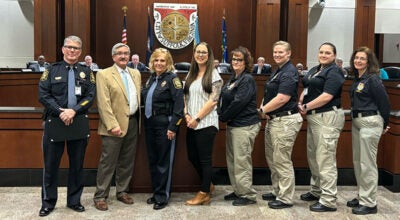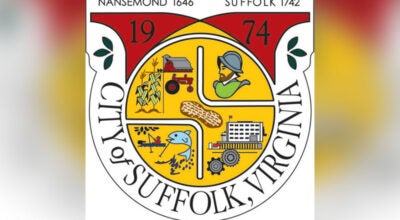Possible detour for 460
Published 9:55 pm Thursday, November 1, 2012
The administration of Gov. Bob McDonnell has encountered problems in its quest to build a new tolled Route 460, with federal authorities resisting signing off on the project until environmental impacts on sensitive wetlands are re-evaluated.
Before the Federal Highway Administration will officially green-light the new road, it has to finish re-evaluating an environmental impact statement submitted by the U.S. Department of Transportation and the Virginia Department of Transportation four years ago.
It may decide to ask for a fresh analysis or for additional study to be conducted, setting back the start of construction, currently scheduled for 2014, and adding new costs.
The highway administration signed off on the EIS in October 2008, and is required to do so again because of the long period that has since elapsed.
Meanwhile, the U.S. Army Corps of Engineers’ Norfolk district, which is in the pre-application phase with VDOT, has raised serious environmental concerns over the planned road.
“All of the alternatives evaluated for the project in the Federal Highway Administration’s EIS, including the currently proposed route, will result in substantial impacts to wetlands, including swamps,” Alice Allen-Grimes, an environmental scientist for the corps’ Norfolk district, wrote in an email.
The corps is yet to receive an application from VDOT, which has also apparently been reticent regarding design plans for the 55-mile, $1.4 billion road from Suffolk to Petersburg.
Allen-Grimes wrote, “We cannot determine how much effort remains with regard to the design plans in order for us to consider a permit application, as we have not been provided any design information.”
Mark Haviland, public affairs chief for its Norfolk district, could not definitively say whether or not the corps has the authority to jettison the project by not signing off if concerns are not addressed.
From his experience, he said, the regulatory branch, after reviewing an application, will make a recommendation to district commander Col. Paul Olsen.
Olsen can then either support the recommendation or decide differently, Haviland said, and any decision he makes is open to various levels of review, including by the courts.
Haviland said some of VDOT’s alternatives for the new 460 have the “potential for significant impacts to aquatic resources,” and said the corps’ mission is to strike a balance in the public interest between development and environmental concerns.
In the late afternoon, Haviland said he had nothing to report from Norfolk District regulatory branch chief Tom Walker’s Richmond meeting Thursday with VDOT officials on a way forward.
Two weeks ago, the state announced a winning bidder in the three-way contest for the right to design, build and profit from the road that is projected to cost Virginia taxpayers $1.8 billion.
Over the summer, VDOT conducted core drilling along the proposed road corridor at, he believes, less than one-mile intervals, said Morteza Farajian, project manager for the 460 for the Office of Transportation Public-Private Partnerships.
Soil samples form part of a geotechnical study that will be used during the project design, and results were submitted to each of the three bidders.
Asked if, based on the samples, any bidder had raised concerns that the marshy ground might not adequately support the road, as has been argued by some project opponents, Farajian said, “Nothing that I’m aware of.”
In an emailed response regarding the environmental concerns, VDOT spokeswoman Shannon Marshall wrote, “We continue to have an open dialogue with the corps to address these issues.”
McDonnell has pushed the project as a crucial piece of infrastructure to maximize the commonwealth’s benefit from the expansion of the Port of Virginia, provide an evacuation route for Hampton Roads, as a strategic asset for the military, and to take trucks off the existing 460, which will remain in place.






